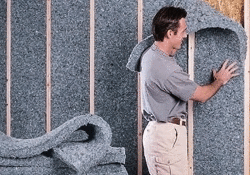WALL PAPERS AND BORDERS IN CEILINGS

If you decide to paper the ceiling, you might also consider using a border to disguise the join where the ceiling meets the wall. This may be the best solution if there is no cornice or picture rail. HANGING BORDERS Borders can be used to break up large wall surfaces above skirting boards, at dado level (approximately 90 cm/36 in from the floor), or at cornice height, or used in panels. Plan the position of borders carefully before you start. Use a long batten or rule to establish a horizontal line. If you are not sure of the effect, stick lengths in place with Blu- Tac before making a [mal decision. Mark the positions of borders very lightly in pencil if they run across an expanse of plain wall. On a papered wall, follow the pattern when align- ing the border. Wallpaper borders are available in various widths, but most rolls are 10 m (11 yd) long. They may be made of paper or vinyl, and some are self-adhesive, which saves pasting. 1. If you are sticking borders to a vinyl surface, use a specially formulated overlap and repair adhesive. Lay the wallpaper border wrong side up on the table, and paste down the length. Wipe the table after pasting each length to keep it clean. Fold the pasted border up into a concertina that you can hold com- fortably in your hand. Start to smooth the paper in place, using a sponge or a wallpaper smoothing brush, and align it carefully with any guidelines you have marked. Wipe off any paste which oozes out from under the border. 2. At corners, such as around a door frame or when pasting the border to form panels on a wall, you should either buy a special decorative corner piece to cover the joins or mitre the corners. It is worth doing a couple of practice mitres to ensure that you can match the pattern around a corner. Paste one strip of paper in place, leaving an overlap of about 15 em (6 in) beyond the corner. Cut the second strip of paper, again allowing a 15 em (6 in) overlap and paste it in place. Before the paper dries, lift the ends of the strips at the corner and slip a piece of card or hardboard beneath. Lay the paper in position over the protective backing, draw a diagonal line with a ruler and pencil and cut through both layers of paper. Remove the backing and offcuts of paper and smooth the border back in place on the wall.